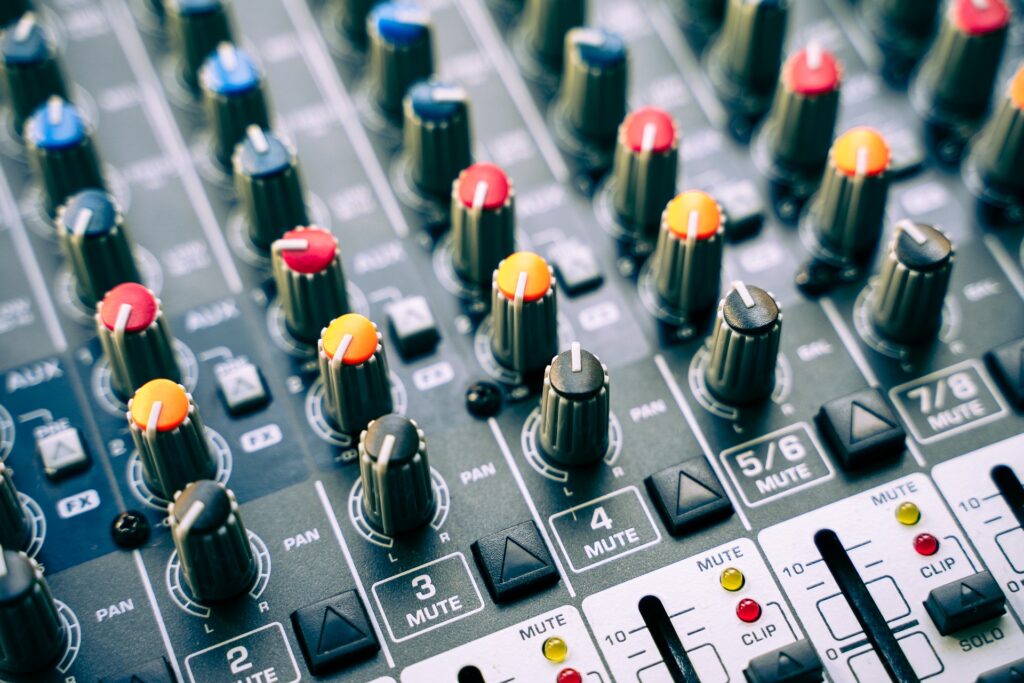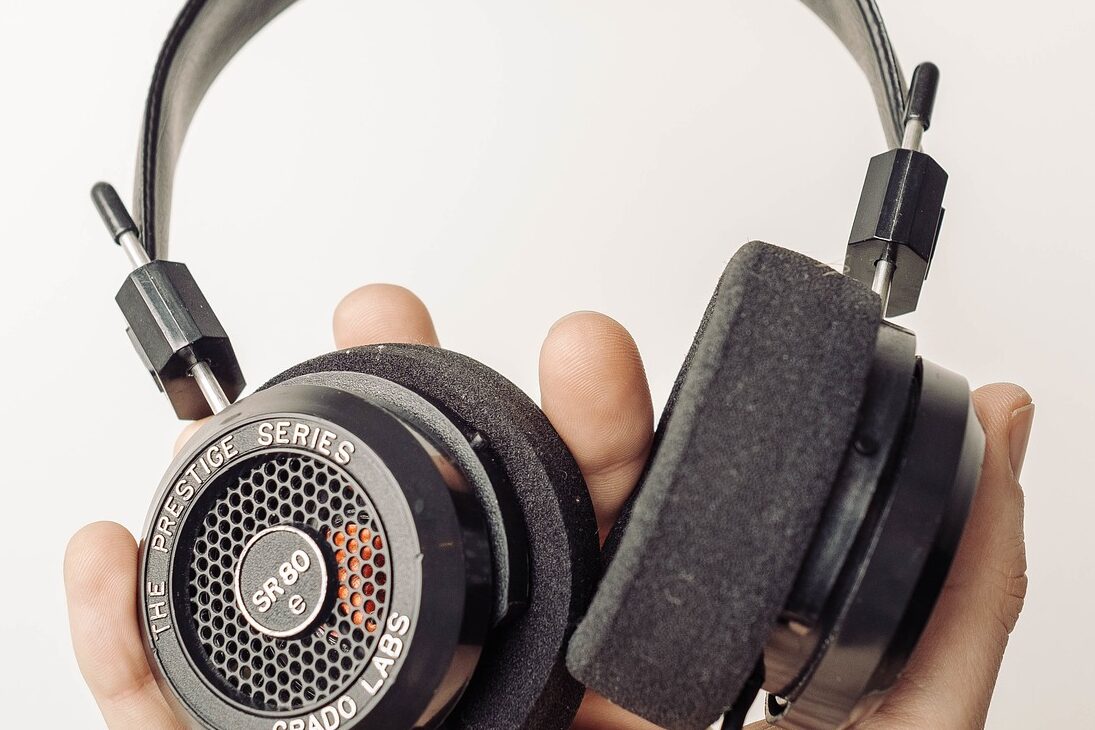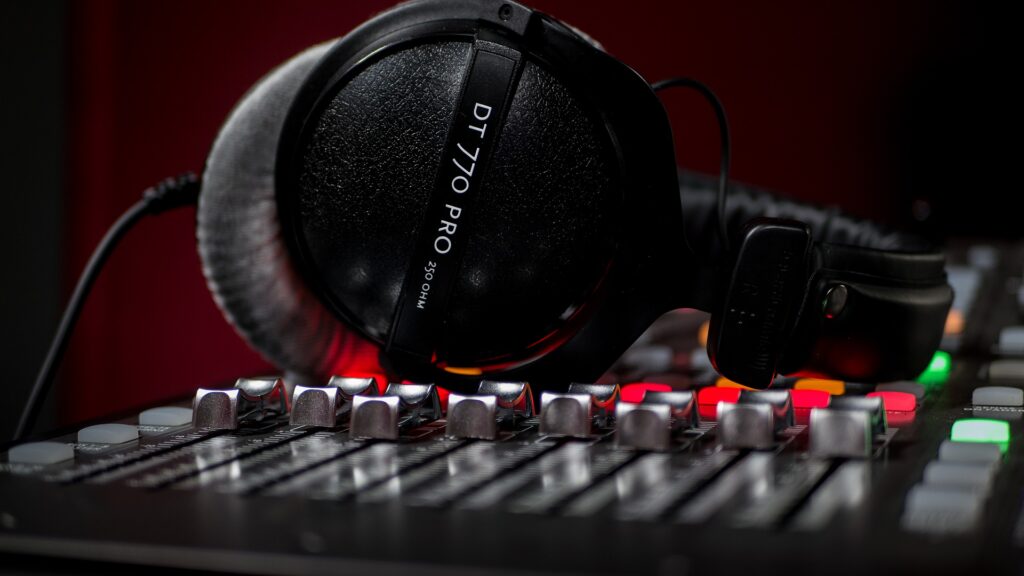Is Mixing in Headphones Worth It?

mixing in headphones
We know, mixing in headphones sounds absurd especially if you are experienced in mixing and mastering music. But can you mix with headphones and end up with a brilliantly mastered track? Stick around to find out.
Let’s cut to the chase, can you mix with headphones? The short answer we can give you is, yes and no. Allow us to explain.
Not every producer or mixing and mastering engineer will applaud the idea of mixing in headphones. And it is understandable, mixing in headphones has its shortcomings. But if you know what you are doing and what to avoid when mixing with headphones, then you will be able to achieve a professional release-ready mix.
Can you mix with headphones?
Mixing in headphones is possible, but there are two things you need to be aware of;
- Your mix may sound unnatural
- You can suffer ear fatigue
Mixing in headphones ruins sound?
If you are new to mixing and mastering, one thing you need to learn about is cross-feed. Cross-feed defines how sound, coming from the left and right speakers, converge and make the stereo output narrower.
Crossfeed defines how music should naturally sound when played through speakers. When mixing in headphones, the sound is hitting you from the right and left hence eliminating crossfeed. If you are not careful, this may end up giving an unrealistic sound to your mix. The absence of crossfeed leaves you clueless of how your mix will sound when played through actual speakers- which is the natural way of listening to music.
So, how do you combat crossfeed problems when mixing on headphones?
One way to eliminate crossfeed issues is by panning your mixes. This helps you expand the stereo field of your mixes to do away with center channel issues.

With mixing on headphones panning, you are balancing the left and right audio signals and determining how wide you want the stereo field to be. A narrow field will feel like the sound is coming directly in front of you and a wider field will feel like the sound is coming from the sides.
Fortunately, it is possible to monitor crossfeed while mixing in headphones. You only need to get the right mixing with headphones plugin that allows you to digitally apply panning to your mix. Some DAW interfaces come with inbuilt mixing on headphone plugins while for others you will have to download the plugins online. But it won't cost you an arm and leg for mixing on headphones plugins.
You can suffer ear fatigue
You don’t have to be a mixing and mastering engineer to know how uncomfortable headphones can be when worn for long. How many times have you felt your ears hurt, or possibly developed a headache, when listening to your favorite playlists, for hours, over headphones?
Now imagine what kind of headache you might get from sitting in front of your monitors for hours mixing on headphones? To paint a picture, it can take you up to 8 hours to mix one track- EQing, panning, reverbing, the whole shebang. Now if you are mixing an entire album on headphones, you can lose your mind.

How then do you tackle the problem of ear fatigue when mixing with headphones? The answer lies in getting the right studio monitoring headphones for the job. What you are looking for are headphones that are comfortable and do not apply too much pressure on your ears.
If you are on the market for new studio monitoring headphones, a majority of audiophiles out there will tell you to go for open-back headphones as opposed to closed back. And there is a good reason for this.
With open-back headphones, air passes through the ear cups to the speaker inside. This airflow allowance prevents pressure from building inside the ear cups. It is this pressure that gives you a headache when mixing on headphones for hours.
While open headphones are recommended, you have to be aware of their one shortcoming. Since the headphones are open-back they have poor noise-canceling capabilities. So if you are mixing with earphones that are open-back, best do it in a quiet room like your bedroom.
If you are mixing on headphones in a noisy room, closed-back earphones would be better. They have better noise cancellation allowing you to fully immerse yourself in the mix. To prevent ear fatigue, go for closed-back headphones that;
- Don’t feel too tight when worn. This prevents your ears from hurting
- Have Bluetooth for a better wireless experience. Ensure you can get at least 30 hours of battery life from them
- Comfortable ear cushions. The wider and puffier the cushions the better
The price of mixing in headphones

One more benefit of studio headphones vs monitors is the pricing. If you are starting in mixing and mastering, chances are you do not have the budget for high-end equipment. And when it comes to studio monitors, the price tag alone can kill your mixing and mastering dreams.
You could easily cop a pair of studio monitors for as little as $200. But such monitors are recommended for near-field monitoring. For professional audio monitoring, you will have to go with the big guns. And for a pair of high-end professional studio monitors, be ready to part with at least $1300.
But with headphones, anywhere around $200 can get you a decent pair with professional sound. And if we speak longevity, $200 headphones best last longer than monitors with the same price tag.
So back to our question,
Can you mix with headphones?
If you know how to handle the monitor crossfeed issue while mixing on headphones, then you are good to go. But if you are unsure of taking the mixing with headphones risk, then a professional mixing and master engineer can help you out.
That’s where we come in. Our 47 times platinum mix and master engineer, Vinny DeLeon will get your mix from sounding good to great. With years of experience in mixing tracks and working with A-list clients, Vinny will handle all the heavy lifting to get your mix release ready.
It’s easy. Call and email us your mix and we take it from there. We promise you, our pricing is the best in the industry right now.
And if you are lucky!
You can get 25% Off on our mixing and mastering products!
Stay winning!

